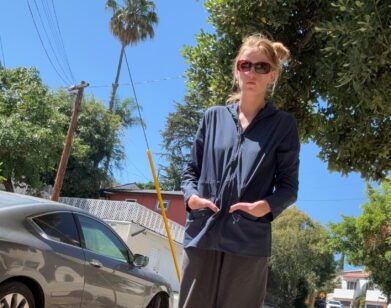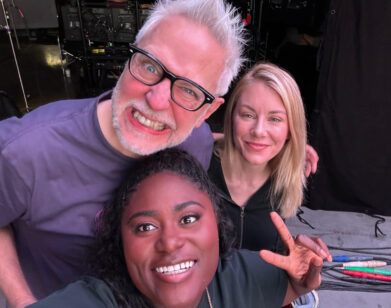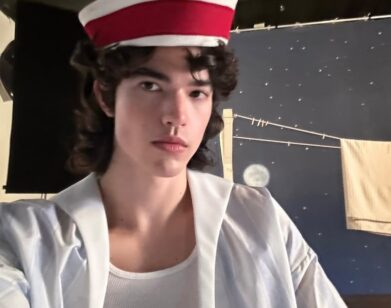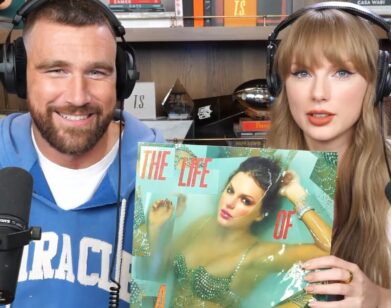The Scarlet F
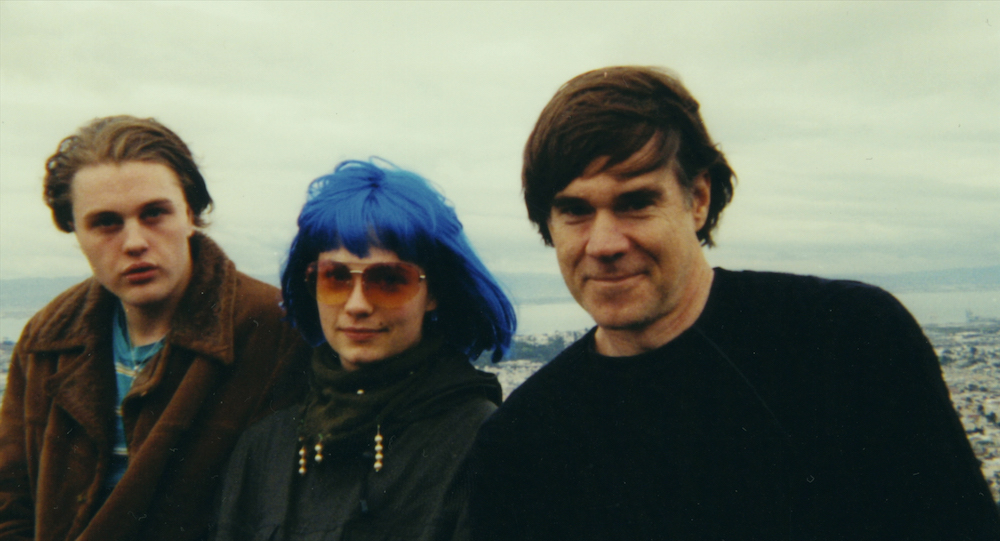
MICHAEL PITT, SAVANNAH KOOP, AND GUS VAN SANT IN AUTHOR: THE JT LEROY STORY. PHOTO COURTESY OF AMAZON STUDIOS/MAGNOLIA PICTURES.
In 1999, Jeremiah “Terminator” LeRoy became an international celebrity with the publication of his novel Sarah and book of short stories The Heart Is Deceitful Above All Things. His fans included Gus Van Sant, Winona Ryder, Asia Argento, and Dennis Cooper. Lines formed around the block for his readings. But LeRoy, a shy young man who had supposedly been raised by his prostitute mother in the truck stops of West Virginia, was never seen in public.
When LeRoy finally did appear, it was in blonde wigs and large, dark sunglasses, which mostly hid his pretty, vulnerable looking face. The more the public’s obsession with his work grew, the more the world wanted to know him—this lonely kid with a dark past who was sometimes a boy, sometimes a girl, and always a poet.
Now screening in select theaters, Author: The JT LeRoy Story is a riveting documentary by Jeff Feuerzeig (The Devil and Daniel Johnston) that traces the wild tale of LeRoy’s creation, rise, and collapse. We meet Laura Albert, the real author of the LeRoy books, who wrote under a pseudonym and produced a proxy in the form of her husband’s sister Savannah to play JT in public. After ten years of silence, Albert finally reveals her side of the strange story. Probing, dark, funny, and revelatory, the nuanced story of Laura Albert and the legend of JT LeRoy is gripping investigative journalism at its best.
ROYAL YOUNG: When were you drawn to the work of JT LeRoy and when did you decide to make a film about it?
JEFF FEUERZEIG: When the scandal broke in 2006—The New York Times unmasked JT LeRoy as Laura Albert—I did not know what a JT LeRoy was. Nor had I read the book. I was a blank slate. But there’s nothing I love more than a great truth-is-stranger-than-fiction story. A journalist friend turned me on to the story. It was being called the “greatest literary hoax of our time.” I devoured all the pieces about it and after reading them I just had this feeling there was much more to the story than we were being told. What was glaringly missing was the voice of the author of the fiction both on and off the page. I wanted to hear that voice. When I found her she had been excommunicated from the literary community.
YOUNG: It seemed to me like it turned into kind of a witch-hunt.
FEUERZEIG: That’s not for me to say, but facts are that she was excommunicated, she was found guilty of fraud in a court of law, she was financially ruined, she was treated as a pariah. There was a big tattoo on her forehead of the scarlet letter F for fraud. That’s the person I found curled up in a ball. She decided to share her story for the very first time with me. Then we went down the road together.
YOUNG: Which was a crazy road, I’m sure. I’m fascinated by creativity and madness.
FEUERZEIG: Which are both very much a part of this story.
YOUNG: Definitely. Also this idea of legend and why people need a legend in their lives, especially in terms of writers or pop culture figures.
FEUERZEIG: Myth is very powerful and fiction is very powerful. For me personally, I love art and artists of all mediums and we’ve seen madness is more often than not present in the greatest painters, poets, writers, and songwriters in history. In terms of legend, people do have a need, but I think you can’t have a legend without the work or the art that comes before it. When work resonates with a person, whether it is literature or film or music, then they want to know more about the artist. That’s very natural.
YOUNG: I remember being a teenager and reading my first short story by Terminator in a copy of Vice I had found on the street on this one stoop in SoHo, the only place you could get the magazine for free. I was hooked by the pure voice.
FEUERZEIG: That’s fantastic. I read the books later. I read Sarah first on a plane in one sitting. In college, I had a big fixation with Southern Gothic literature. Flannery O’Connor, I read every word she’s ever written. But I sort of had the same experience as you. When I read any book, if it’s really good I get lost in the writing whether it’s fiction or non-fiction. I’m in the story not thinking about who wrote it. What is fiction or cinema if not escape?
YOUNG: Absolutely. Why do you think there was such an obsession with who was behind the work?
FEUERZEIG: Obviously, we now know this was a pseudonym or pen name, but it was also very unique. To my knowledge, we’ve never seen one like it before where the author was out there in public as another person. We’ve certainly seen literary women writing as men. The pseudonym had its own autobiography that was out there. There was a mystique because initially the young boy was just a voice on the phone. When the work was published, the boy remained a voice on the phone. Celebrities and authors would read the book because the boy was painfully shy. That was kind of like Zorro.
YOUNG: Or the Wizard of Oz.
FEUERZEIG: Yeah. You always want to unmask the person and find out who they are—that feeling of wanting what you can’t have. Plus the books were well-reviewed, international bestsellers during a zeitgeist moment in publishing for transgressive fiction. These rock star-like events happened at book readings where you’d have lines around the block all over the world for at least seven years. JT also crossed over into fashion and music and Hollywood.
YOUNG: One thing I found so interesting was in the beginning of the film when JT is just a disembodied voice on the phone, sending pages by fax machine. Technology that’s antiquated now seems like it helped fuel the mystique.
FEUERZEIG: Yeah, I referenced that because there was no Facetime. You couldn’t see Laura Albert hiding on the floor of a bathroom talking as a boy. There was more anonymity.
YOUNG: How do you see the story of JT evolving? It feels like it is still living.
FEUERZEIG: What I learned and hope the film shows is that it was a very organic journey filled with a massive amount of lies and deceit for unique reasons. I came to learn Laura’s tragic backstory. Each one for me was a revelation. To learn that she was institutionalized multiple times, that she had a help hotline addiction calling as boys from a very young age. To find her young girl notebooks with pages and pages of hotline numbers and hundreds of boy/girl doodles in the margins. Of course learning that during her punk rock salvation, she had such tremendous body issues with her weight that she sent her younger sister JoJo out as an avatar. That is Savannah 20-something years later. When Laura is put in a group home as a teenager, she meets a boy—
YOUNG: And all of a sudden she’s a British punk rocker [laughs]
FEUERZEIG: [laughs] Yeah, because they’d seen Quadrophenia. Everything that happened to her is reflected in the saga of JT LeRoy. The central themes of her two books are physical abuse, sexual abuse, gender fluidity, and those are all very real things in her own life that she was channeling as fiction that she needed like oxygen to live.
YOUNG: I definitely feel all art is true.
FEUERZEIG: Yes, that’s why I put the Fellini quote at the beginning, “A created thing is never invented and it is never true: it is always and ever itself.”
AUTHOR: THE JT LEROY STORY IS OUT IN SELECT THEATERS NOW.

